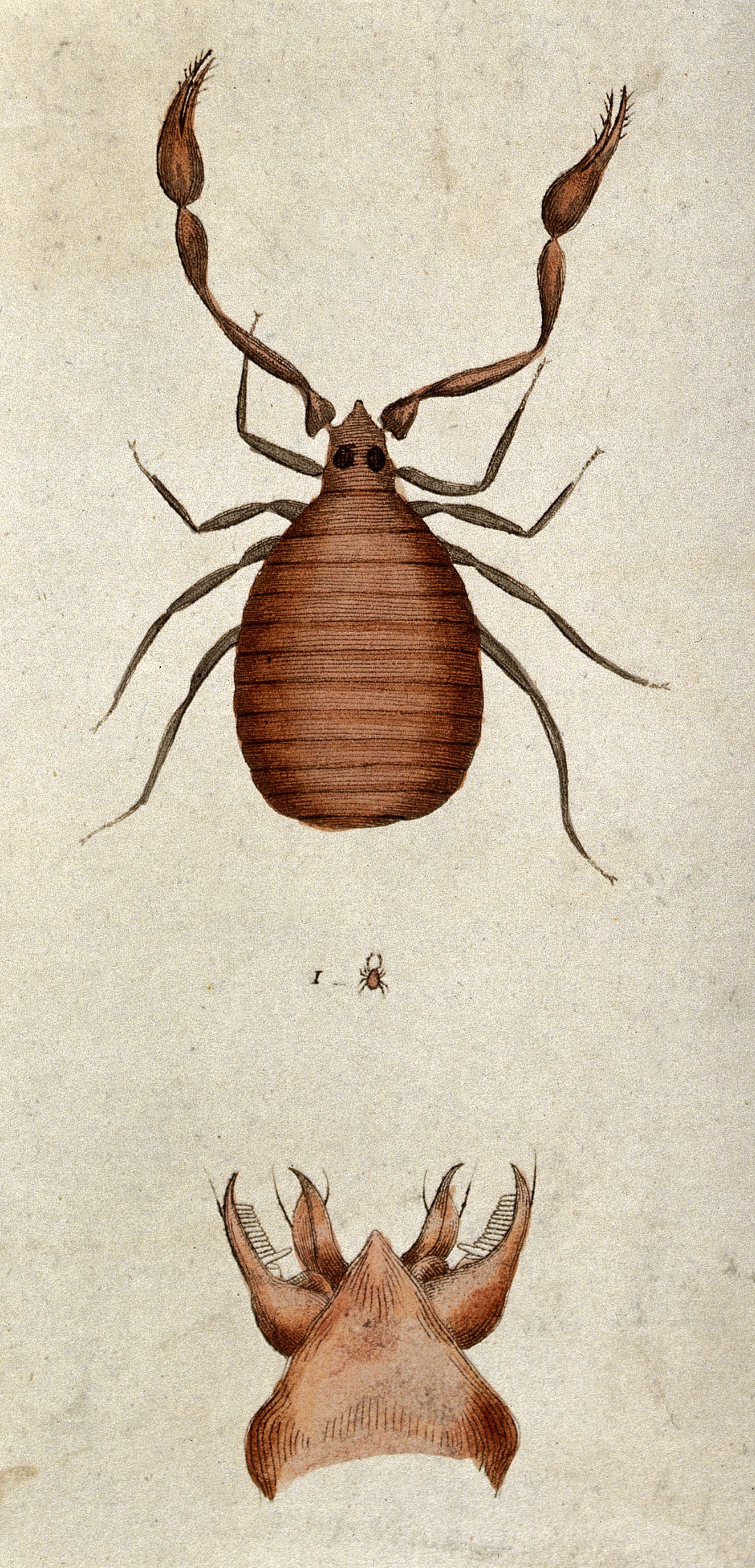|
Ideoroncidae
Ideoroncidae is a family of pseudoscorpions belonging to the order Pseudoscorpiones. Members of the family are known from Asia, Africa, western North America and South America. Genera: * '' Afroroncus'' Mahnert, 1981 * '' Albiorix'' Chamberlin, 1930 * '' Botswanoncus'' Harvey & Du Preez, 2014 * '' Dhanus'' Chamberlin, 1930 * '' Ideoroncus'' Balzan, 1887 * '' Mahnertius'' Harvey & Muchmore, 2013 * '' Muchmoreus'' Harvey, 2013 * '' Nannoroncus'' Beier, 1955 * '' Negroroncus'' Beier, 1931 * '' Pseudalbiorix'' Harvey, Barba, Muchmore & Pérez, 2007 * ''Shravana'' Chamberlin, 1930 * '' Sironcus'' Harvey, 2016 * '' Typhloroncus'' Muchmore, 1979 * '' Xorilbia'' Harvey & Mahnert, 2006 A fossil genus, '' Proalbiorix'' is known from the Cenomanian aged Burmese amber Burmese amber, also known as Burmite or Kachin amber, is amber from the Hukawng Valley in northern Myanmar. The amber is dated to around 100 million years ago, during the latest Albian to earliest Cenomanian ages of the mid-Cr ... [...More Info...] [...Related Items...] OR: [Wikipedia] [Google] [Baidu] |
Pseudoscorpion
Pseudoscorpions, also known as false scorpions or book scorpions, are small, scorpion-like arachnids belonging to the order Pseudoscorpiones, also known as Pseudoscorpionida or Chelonethida. Pseudoscorpions are generally beneficial to humans since they prey on clothes moth larvae, carpet beetle larvae, booklice, ants, mites, and small flies. They are tiny, and are rarely noticed due to their small size, despite being common in many environments. When people do see pseudoscorpions, especially indoors, they are often mistaken for ticks or small spiders. Pseudoscorpions often carry out phoresis, a form of commensalism in which one organism uses another for the purpose of transport. Characteristics Pseudoscorpions belong to the class Arachnida. They are small arachnids with a flat, pear-shaped body, and pincer-like pedipalps that resemble those of scorpions. They usually range from in length.Pennsylvania State University, DepartmentEntomological Notes: Pseudoscorpion Fact Sheet/r ... [...More Info...] [...Related Items...] OR: [Wikipedia] [Google] [Baidu] |
Dhanus (arachnid)
''Dhanus'' is a genus of pseudoscorpions in the family Ideoroncidae. They are found in Asia, between Malaysia to the east and Iran Iran, officially the Islamic Republic of Iran, and also called Persia, is a country located in Western Asia. It is bordered by Iraq and Turkey to the west, by Azerbaijan and Armenia to the northwest, by the Caspian Sea and Turkmeni ... and Soqotra to the west. It includes the following species: *''Dhanus afghanicus'' *''Dhanus doveri'', synonymous with ''Dhanus sumatranus'' *''Dhanus hashimi'' *''Dhanus indicus'' *''Dhanus pohli'' *''Dhanus socotraensis'' *''Dhanus taitii'' *''Dhanus tioman'' The species ''Dhanus siamensis'' has been recently reclassified in a new genus of its own called ''Sironcus''. References Pseudoscorpion genera Neobisioidea {{Pseudoscorpion-stub ... [...More Info...] [...Related Items...] OR: [Wikipedia] [Google] [Baidu] |
Pseudoscorpiones
Pseudoscorpions, also known as false scorpions or book scorpions, are small, scorpion-like arachnids belonging to the order Pseudoscorpiones, also known as Pseudoscorpionida or Chelonethida. Pseudoscorpions are generally beneficial to humans since they prey on clothes moth larvae, carpet beetle larvae, booklice, ants, mites, and small flies. They are tiny, and are rarely noticed due to their small size, despite being common in many environments. When people do see pseudoscorpions, especially indoors, they are often mistaken for ticks or small spiders. Pseudoscorpions often carry out phoresis, a form of commensalism in which one organism uses another for the purpose of transport. Characteristics Pseudoscorpions belong to the class Arachnida. They are small arachnids with a flat, pear-shaped body, and pincer-like pedipalps that resemble those of scorpions. They usually range from in length.Pennsylvania State University, DepartmentEntomological Notes: Pseudoscorpion Fact Sheet/r ... [...More Info...] [...Related Items...] OR: [Wikipedia] [Google] [Baidu] |
Pseudoscorpions
Pseudoscorpions, also known as false scorpions or book scorpions, are small, scorpion-like arachnids belonging to the order Pseudoscorpiones, also known as Pseudoscorpionida or Chelonethida. Pseudoscorpions are generally beneficial to humans since they prey on clothes moth larvae, carpet beetle larvae, booklice, ants, mites, and small flies. They are tiny, and are rarely noticed due to their small size, despite being common in many environments. When people do see pseudoscorpions, especially indoors, they are often mistaken for ticks or small spiders. Pseudoscorpions often carry out phoresis, a form of commensalism in which one organism uses another for the purpose of transport. Characteristics Pseudoscorpions belong to the class Arachnida. They are small arachnids with a flat, pear-shaped body, and pincer-like pedipalps that resemble those of scorpions. They usually range from in length.Pennsylvania State University, DepartmentEntomological Notes: Pseudoscorpion Fact Sheet/r ... [...More Info...] [...Related Items...] OR: [Wikipedia] [Google] [Baidu] |
Burmese Amber
Burmese amber, also known as Burmite or Kachin amber, is amber from the Hukawng Valley in northern Myanmar. The amber is dated to around 100 million years ago, during the latest Albian to earliest Cenomanian ages of the mid-Cretaceous period. The amber is of significant palaeontological interest due to the diversity of flora and fauna contained as inclusions, particularly arthropods including insects and arachnids but also birds, lizards, snakes, frogs and fragmentary dinosaur remains. The amber has been known and commercially exploited since the first century AD, and has been known to science since the mid-nineteenth century. Research on the deposit has attracted controversy due to its alleged role in funding internal conflict in Myanmar and hazardous working conditions in the mines where it is collected. Geological context, depositional environment and age The amber is found within the Hukawng Basin, a large Cretaceous-Cenozoic sedimentary basin within northern Myanmar. The s ... [...More Info...] [...Related Items...] OR: [Wikipedia] [Google] [Baidu] |
Albiorix (arachnid) , a satellite of Saturn
{{Disambiguation ...
Albiorix may refer to: * A Celtic theonym that appears as an epithet of the Roman Mars * Albiorix (arachnid), a genus of arachnids in the family Ideoroncidae * Albiorix (Gaulish deity) * Albiorix (moon) Albiorix is a prograde irregular satellite of Saturn. It was discovered by Holman and colleagues in 2000, and given the temporary designation S/2000 S 11.Gladman, B. J.; Nicholson, P. D.; Burns, J. A.; Kavelaars, J. J.; Marsden, B ... [...More Info...] [...Related Items...] OR: [Wikipedia] [Google] [Baidu] |



